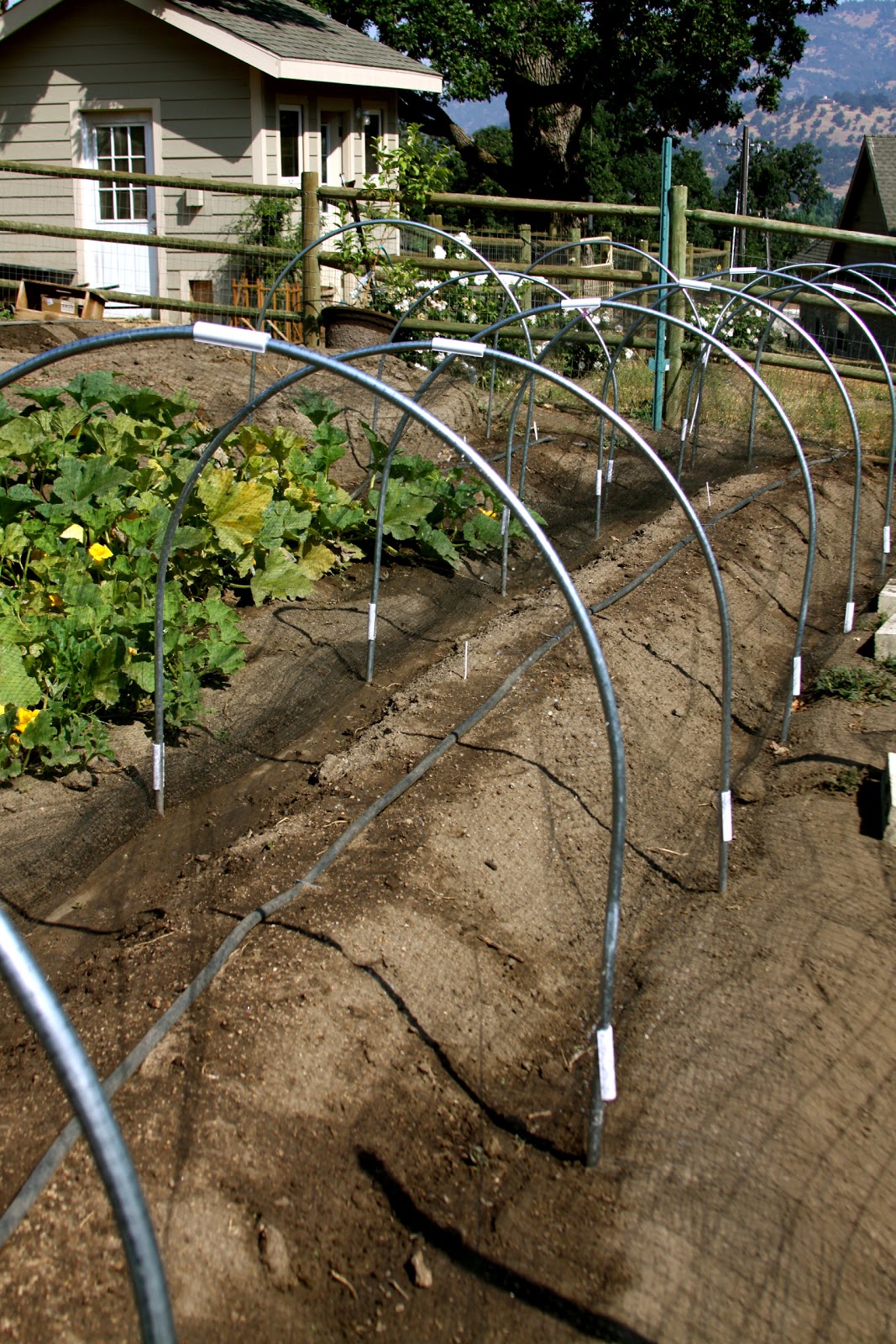Some advice from the great white north - you need some cheapo DIY low tunnels that you can throw plastic over for the winter/early spring and remove for the summer. They'll quadruple in function as over the summer, you'll get cheap and effective crop protection by throwing bird netting or even window screen over it to keep the munchers at bay, during the hottest part of summer you can throw some shade cloth over them to protect the more delicate plants like lettuce from sunburn and droughty conditions, then you throw the plastic back over in the fall/early winter for your winter carrot supply and all the garden fresh, cold hardy greens you've been missing. Using the low tunnel, I was still harvesting swiss chard, lettuce cabbage leaves, collards, kale and broccoli just a two weeks ago here in Maine .. heck, even the
volunteer borage seedlings were still going strong on Christmas! Look up Elliot Coleman to see what's possible if you're interested


That picture shows aluminum tubes for ribs covered with bird netting - the cheapo, redneck version uses the gray, UV-treated schedule 40 PVC electrical conduit. It's not very environmentally friendly I'm sure (aluminum is no better), but it's durable, lasting for many years and staying flexible. Regular pvc pipe is often cheaper but UV will kill it in just one or two seasons, so better to spend the 30% more upfront and get decades out of it.
Eyeballing the size of your beds, you're probably looking at 10 foot lengths of 3/4" electrical conduit for the ribs ($2 each around here). You'll want those set at about a 2 foot spacing (so 11 of them for a 10 foot long bed). A 20x100 roll of clear 4 mil plastic ($60-$80) will do wonderfully and last for at least a full year of use, maybe two, though it will cloud up due to UV damage over time and start getting brittle. You'll also need two 2ft lengths of 1/2" rebar for each rib ($1.60-$1.80 each) - jab them into the soil on either side of the bed and pound them in so only 6" to 1ft is still sticking up, then place your conduit down over those, creating a nice arch. This part is a pain if you have rocky soil or bedrock close to the surface, but it definitely doesn't have to be perfect.
The next step up from this is a full diy cheapo hoop house you can grow citrus in with your climate...setting up a few low tunnels will be good practice

The low tunnel will help immensely with your greens, protection from frost, and getting the soil warm earlier in the season, but with some of those more picky seeds, like tomatoes/peppers/eggplants, you really do need extra heat (they like to germinate with temps around 70*F minimum, some holding out for 95*F!). In those cases, it's going to be hard to do much other than having them indoors. Top of the fridge might do the trick (then move to warm/sunny window once sprouted). Another option is a heating pad in an out of the way place (under the bed?) until they sprout (and again, move to warm/sunny spot). If you've got a
rocket mass heater, well, consider it a super efficient, renewable resource fueled mega-heating-pad. The cat will just have to find another place to be lazy


 1
1




![Filename: FullSizeRender.jpg
Description: [Thumbnail for FullSizeRender.jpg]](/t/52752/a/35227/FullSizeRender.jpg)

 2
2




 2
2




















 1
1




 1
1





















 1
1












